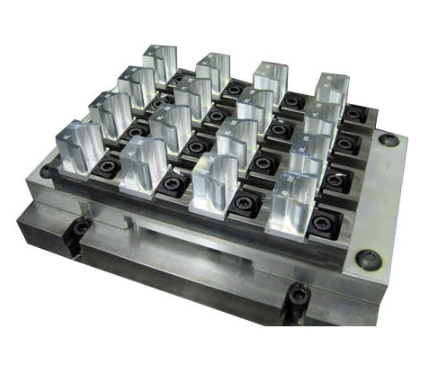Sometimes even if you used the same CNC machine tool, the production efficiency or speed varies a lot. What causes such a result? The conclusion may be that the CNC fixture selected for the machines is not suitable, resulting in the production efficiency of the CNC machining service is greatly reduced. Here, the right selection and use of CNC fixture are introduced in detail.

The common CNC turning fixture or milling fixture is a work-holding tool or device used in the machining process to position and hold the workpiece, withstand large cutting force, and guides the cutting tool when the cutting is performed, ensure the quick transition, smooth operation and all the parts are produced maintaining conformity and interchangeability. Most fixtures are designed to a combination of two components, one of them is affixed to the machine body and immovable, and the other part is one or more movable components (clamps). The CNC fixtures are often made from mild steel, stainless steel, and other alloy steel materials, comes in different sizes and configurations. The final purpose is to improve the economy.
Select and use CNC fixture correctly is the basis of efficient machining, before choosing or buying a CNC clamp, we need to understand the characteristics of mechanical processing and types of CNC fixtures firstly. The mechanical manufacturing including two types: single-piece, multiple varieties, small batch; less variety and large batch.
1. Modular fixture
Modular fixture is consists of a series of machine tool fixture elements with standardized design, different functions and different sizes. You can assemble various types of new fixtures according to the processing requirements, saving much time for designing and manufacturing. The modular fixture effectively shortens the preparation time and production cycle, then improves manufacturing efficiency. It also has high positioning accuracy, large clamping flexibility, and recyclable characteristics, really suitable for small batch products with complex shapes.
2. Hydraulic/pneumatic fixture
Hydraulic/pneumatic fixture is a kind of special work holding tool, which uses oil pressure or air pressure as the power source and uses hydraulic or pneumatic components to locate, support and compress the workpiece. The hydraulic/pneumatic clamps can accurately and quickly determine the workpiece position relative to the machine tool and cutters, also can ensure the position accuracy of the workpiece, achieve high machining accuracy; rapid positioning and clamping, which greatly saves the time of clamping and releasing the workpiece; at the same time, it has compact structure, available in multi-point clamping, high-speed cutting, and automatic control, suitable for large-scale processing with CNC machining center.
3. Electromagnet clamps
The electromagnet fixture has the advantages of quick clamping, easy to realize multi-position clamping, multiple surface processing, stable and reliable clamping, energy-saving, and automatic control. It is not only suitable for small batch production but also can be used in large batch manufacturing.
Selecting a CNC fixture or clamp should consider the types of CNC machining center, precision requirements, batch size, processing cost and more factors. The high flexibility of 4-axis machining center and 5-axis machining center needs the fixture to be compact and simple to load/upload, so as to minimize the auxiliary time, save labor cost, make operation more convenient, ensure sufficient rigidity and safety.
The most popular workholding solution is Milling Vise.
– Milling vise
– Expanding mandrels, arbors, and studs
– T-Slot tables
– Work pallets
– Wedge clamping elements
– Compact centric clamps
– Pneumatic vertical clamps
– Precision rotary axis with tailstock